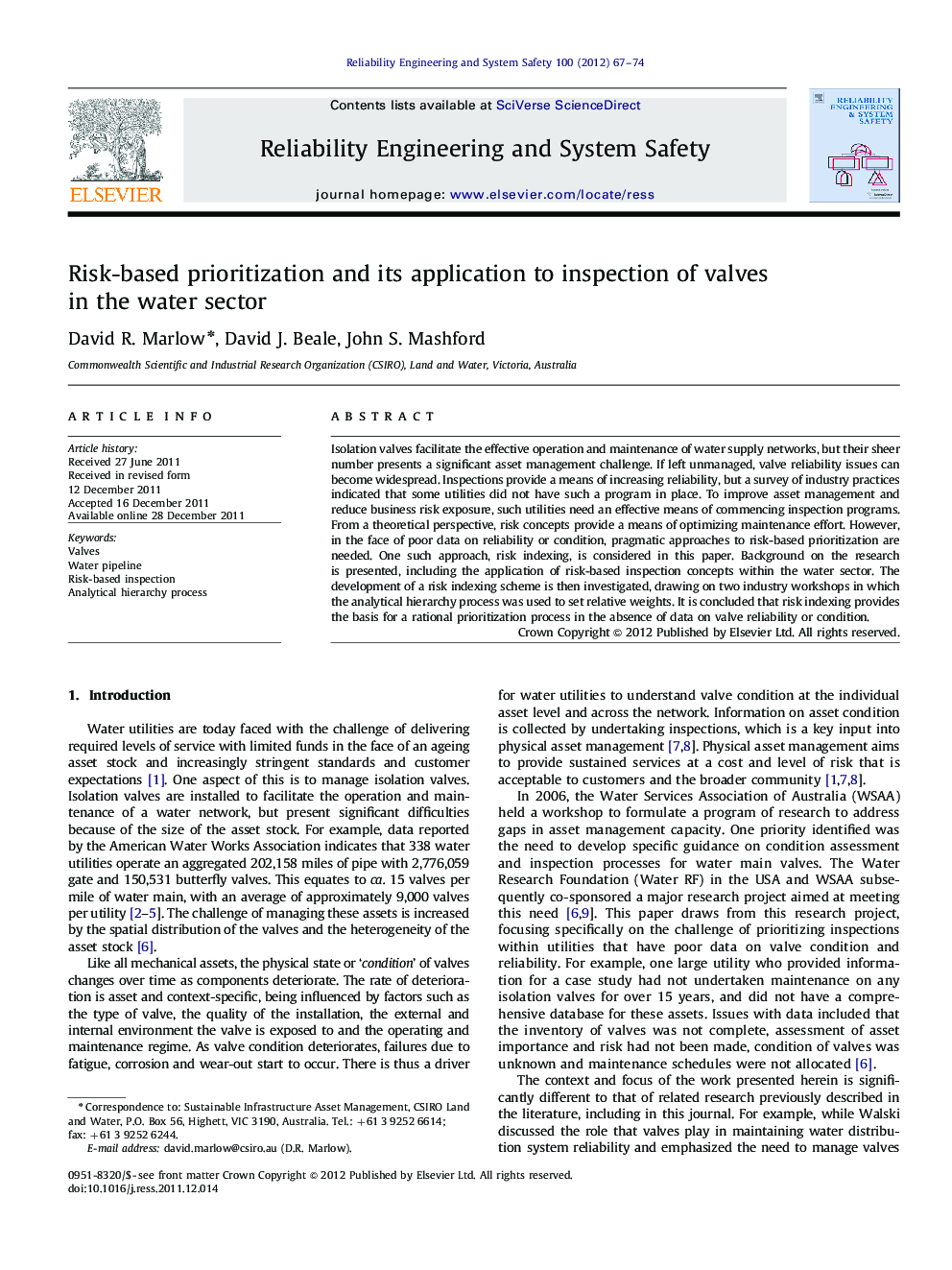| Article ID | Journal | Published Year | Pages | File Type |
|---|---|---|---|---|
| 807985 | Reliability Engineering & System Safety | 2012 | 8 Pages |
Isolation valves facilitate the effective operation and maintenance of water supply networks, but their sheer number presents a significant asset management challenge. If left unmanaged, valve reliability issues can become widespread. Inspections provide a means of increasing reliability, but a survey of industry practices indicated that some utilities did not have such a program in place. To improve asset management and reduce business risk exposure, such utilities need an effective means of commencing inspection programs. From a theoretical perspective, risk concepts provide a means of optimizing maintenance effort. However, in the face of poor data on reliability or condition, pragmatic approaches to risk-based prioritization are needed. One such approach, risk indexing, is considered in this paper. Background on the research is presented, including the application of risk-based inspection concepts within the water sector. The development of a risk indexing scheme is then investigated, drawing on two industry workshops in which the analytical hierarchy process was used to set relative weights. It is concluded that risk indexing provides the basis for a rational prioritization process in the absence of data on valve reliability or condition.
► Importance of valve inspections to water network reliability. ► Theoretical perspective of risk concepts that provide a means of optimizing inspection programs. ► Pragmatic approaches to prioritization in light of poor valve data. ► Development and assessment of a risk index scheme. ► Use of the analytical hierarchy process to set relative weights of risk factors.
